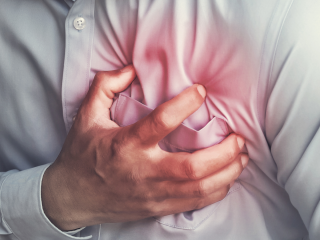A cardiac arrest happens when a person’s heart stops beating suddenly. This can be due to a number of causes and risk factors. When cardiac arrest occurs, there are several signs that could present themselves. These signs show up rapidly and it is imperative that they are taken seriously. If you do not take immediate action, the person experiencing these symptoms could die.
- Chest pain or discomfort
The person in question might complain that they are experiencing chest discomfort or pain. This is one of the top signs to look out for.
- Shortness of breath and/or wheezing
Look out for trouble speaking, a noticeable shortness of breath and/or wheezing.
- Lightheadedness, dizziness and/or fainting
If someone is going to experience a cardiac arrest, they may feel lightheaded or even faint. They could also be dizzy or lose consciousness completely.
- Irregular or pounding heartbeat
Their heart might feel like it is pounding out of their chest, or they could be experiencing palpitations. Watch out for an irregular heartbeat.
- Nausea or vomiting
If they are also feeling sick to their stomach, this can be a telltale sign that they need help.
But what is the difference between a cardiac arrest and a heart attack? Both are certainly linked but are different heart-related issues. A cardiac arrest occurs when the heart suddenly and unexpectedly stops pumping. If this happens, blood stops flowing to the brain and other vital organs. A heart attack occurs when the blood flow that brings oxygen to the heart muscle is severely reduced or cut off completely and the heart can’t get enough oxygen. In essence, a cardiac arrest is an electrical problem, while a heart attack is more of a plumbing problem.
Cardiac arrests and heart attacks are both life-threatening emergencies and must be acted upon immediately. If someone you know is experiencing one of the two, performing CPR and/or using an AED (Automated External Defibrillator) can save their life if done quickly. CPR helps to push blood and keep it flowing through the body. An AED will help the heart get back to an effective rhythm. In addition to these two tools, it is vital that you call 911 right away so that the professionals can take over once they arrive.
Learn how to save a life by taking a St. John Ambulance first aid course! A skilled instructor will take you through the steps of CPR and will teach you how to use an AED properly. Both are essential skills that everyone should know when it comes to helping someone in a medical emergency. We offer classes across Canada.
